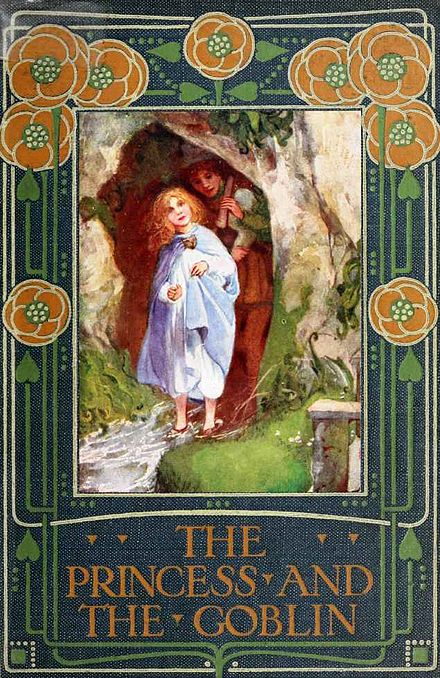The Princess and the Goblin
Reviewed Apr 6, 2017 on The Litt Review.

I’ve read The Princess and Curdie half a dozen times since I was young; it’s a beautiful story about a young minor who is tasked with traveling to a far-off court to save the Princess. The miner’s beast, bathing his hands in a fire made of roses, his ability to sense the animal inside the humans at court - the story has forever shaped how I read not only fantasy, but also the world. I have a tattoo on my inner left forearm of a hammer, based on Curdie’s mattock (something I don’t mention very often, because who reads George Macdonald anymore?). I’ve read Phantastes and Lilith, too.
But I had somehow never read The Princess and the Curdie. So, a few weeks ago, while I was looking for The Scottish Himalayan Expedition in the McGill library, and when I had some time to kill, I went to find The Lion, The Witch, and the Warddrobe so that I could read about Narnia again, as it was all snow outside and I wanted to imagine Mr Tumnus walking by. Their copy was checked out; but I notcied a beautifully bound book nearby, acquired by the library in 1925 but probably printed before that. I checked it out.
The first few chapters I read aloud to my girlfriend as we lay in bed. We giggled at Macdonald’s old fashion view of princesses and nurses - he goes on and on about how a princess ought to behave, about how, “because she was a princess, she didn’t do X” and so on. The language is spattered with phrases like, “Oh, aren’t you a dear!”, and other such old fashioned language that sounds so odd to a 21st century ear. Reading this aloud proved tiring at some point, so I switched to silent reading.
The book is a gem. It’s short, and a bit confusing at times, but it has within it a few things that are missing from today’s fantasy. For one, it’s not aimed at adults, but children. There are wide open mountains; there are goblins without fangs; there are kings who are Good. You can scatter goblins by stomping on their feet and by making up rhymes. It reminded me of the Brothers Grimm, and their stories - an older, more fairytale setting. There’s even the Princess’s great-great-great fairy grandmother - or, rather, her faery one, for she has no wings, but she has an ineluctable magic that draws one in.
This book is actually the prequel to The Princess and Curdie, so, suddenly, a lot of that book makes sense where it didn’t before. I liked that immensely. I think the second book is deeper - more allegorical, whereas this is much more of a cute narrative than anything else. Still, it was a quick pleasure to read, and especially in a leather-bound hardcover where the section-sewn pages were coming out in yellow clumps, complete with the smell of book must.
As a final note, there were a few fun linguistic items in this book. For instance, one of the Goblins uses the word ‘hubby’, which I had previously assumed was a modernism. It’s not.
“I will do just as I like,” retorted the queen sulkily. “You ought to do as your hubby wishes you,” said the king.
That was fun to learn.
You can read the book online, or download it for free, at Project Gutenberg.
Do you want to get book reviews and notes from books I read in your inbox? Sign up! I'll include a summary, my favorite quotes from the book, and any vocabulary I found interesting or didn't know already.